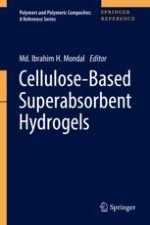2019 | OriginalPaper | Chapter
35. Moisture Sorption Isotherm and Isosteric Heat of Sorption Characteristics of PVP-CMC Hydrogel Film: A Useful Food Packaging Material
Authors : Nabanita Saha, Madhusweta Das, Dipali S. Shinde, Antonin Minařík, Petr Saha
Published in: Cellulose-Based Superabsorbent Hydrogels
Publisher: Springer International Publishing
Activate our intelligent search to find suitable subject content or patents.
Select sections of text to find matching patents with Artificial Intelligence. powered by
Select sections of text to find additional relevant content using AI-assisted search. powered by
